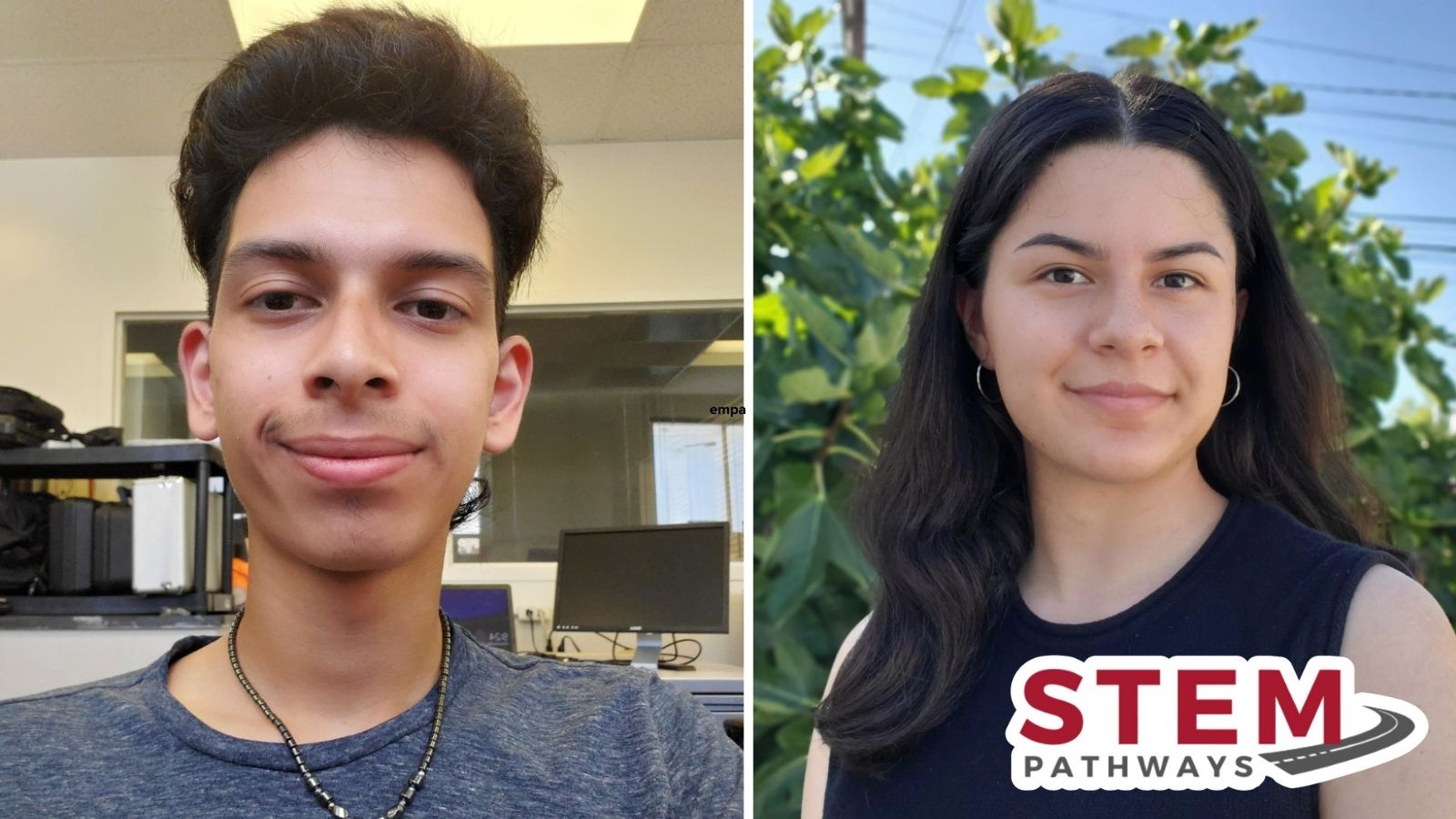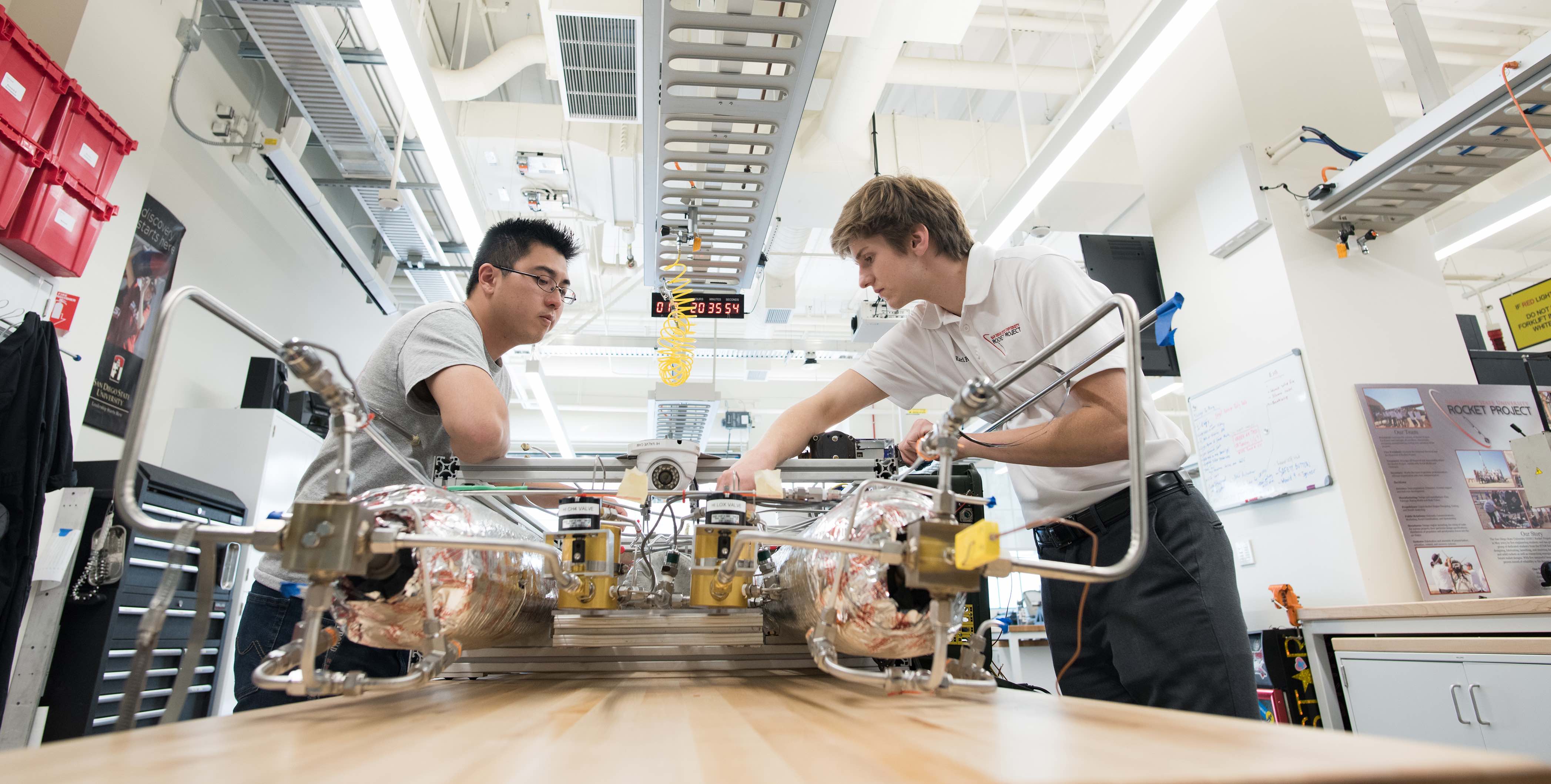Undergraduates Participate in STEM Pathways Program

Through the STEM Pathways Project, incoming engineering transfer students participate in an entering research course at the community college level, several enrichment workshops, mentoring and applied STEM experiences that help students obtain the knowledge and skills necessary to be successful in a career in STEM. Read more from two Summer 2022 transfer student participants below.

What’s your involvement so far on campus?
Amy Gonzalez: I’m an incoming junior transfer student studying electrical engineering. I am currently researching in the SysteMs & Intelligence (SMILE) Lab and I am in the STEM Pathways program.
Oliver Casillas: I’m an incoming transfer student studying mechanical engineering and am working in the Energy FANS lab (Flames, Aerosols and NanoScience).
How did you get involved in research through STEM Pathways?
Gonzalez: I came from San Diego City College and was in the MESA Program there. The program coordinator, Rafael Alvarez, asked me what I would be doing over the summer and I told him that I would just be taking classes. He then asked me if I was going to do any research or internship and I said no because I wasn’t ready for such a high level of work. He then told me to apply to STEM Pathways and not sell myself short because I am more than ready and if I need help the Pathways program will be there to support me. To my surprise I was accepted!
Casillas: I got involved in the STEM Pathways Program thanks to a previous program which I was a part of in community college which is the Mentors Pathway program. It has a partnership with SDSU but only for Chemistry majors, so I got introduced to the STEM Pathways in one of the meetings for the program, and I decided to apply since it is for any STEM major.
What is your research project and description?
Gonzalez: My research project is to program a Tello drone with Python in order to control it with specific upper body movements. I don’t have experience with Python or drones but with trial and error I have been learning a lot.
Casillas: I have been working with ANSYS solid modeling, which consists of doing 3D models of the quartz sheets that are used in the lab and then using the ANSYS workbench in order to run simulation to understand what is the transfer heat. This would be useful to determine the temperature at which the sheets that are used in the lab get to or at what temperature we need to have the flame in order to get the desired temperature on the sheets so that the nanoparticles can form. This is useful because the nanoparticles get attracted to the cold areas on top of the sheet.
What are you learning through the STEM Pathways Program?
Gonzalez: I am learning how to be a researcher since I have no previous experience. I am also learning how to be a SDSU student since I will be transferring in Fall 2022. They give us heads up on what to look for and what questions to ask. Overall they provide a lot of support!
Casillas: Through the STEM Pathways program, I am learning about how to do research, how to read primary literature, what difference to expect from a university, and how to mentally prepare and have the goals to learn the skills from the classes instead of just focusing on the grades. Also, they direct us to different resources that we can use to answer our questions related to classes, or internships, or abroad programs.
What are the benefits to working with faculty?
Gonzalez: I can personally ask them questions and receive recommendations on how to approach problems I have with the project. It also opens an opportunity to networking, which is vital in any line of work. ("Amy is a highly motivated student and is working hard on her research project on gesture-based drone control. This project is challenging for students new to robotics as it covers many areas including system control, computer vision, programming, and aerospace engineering, but she learns quickly and has been making good progress," said Junfei Xie, Amy's faculty mentor.)
Casillas: There are definitely benefits of working with faculty since they know a lot about their current field, and they can guide you to find more information, another thing is that they can also refer you for future research opportunities or internships opportunities as long as you did a good job on the lab, and not only faculty but there are other undergraduate or graduate students who can give you advice on how to be successful on your classes, and what to expect from your future university experience.
Advice to students who want to get involved in research:
Gonzalez: Don’t sell yourself short! You may feel like you are not smart enough or ready to participate in research and that is fine. Everyone started as you did with little to no experience but if you are hard working and don’t give up you are more than ready. Also be open to different types of research instead of just focusing on ones close to your major. By doing different research you can learn what you like and dislike and this gives you a better idea on what exactly you want to do as a job. Lastly, by doing research you have the opportunity to apply what you have learned in classes into real life situations. This way you truly understand what you have been taught.
Casillas: The thing that I think would help students get involved is to get involved in programs, talk to faculty about what their research is about - maybe one of those faculty is doing something interesting, and the student can ask them how they can get involved. The worst thing that the professors can say is they don't have enough room at the moment but can perhaps get involved later on.
Interview lightly edited for clarity.

